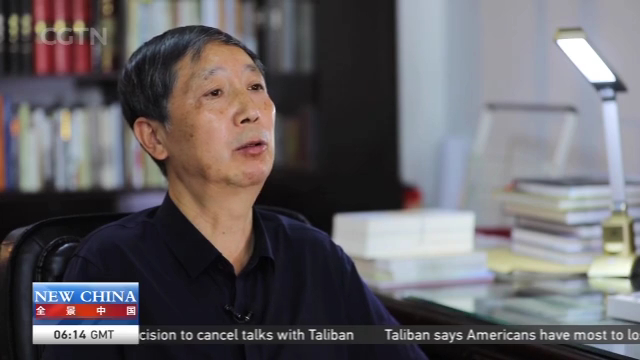
16:15, 09-Sep-2019
Celebrating 70 Years of New China: Northern port city of Manzhouli links China to world
Updated
16:45, 09-Sep-2019

Situated along China's border with Russia and Mongolia, Manzhouli is now China's biggest Eurasian land passageway. CGTN's Feng Yilei shows us how the city has developed over the generations.
Manzhouli, a city born from railways - From the early 20th century, settlements began to form around the first stop of the Russian-built Chinese–Eastern Railway after crossing into China. Changing landmarks tell the story of the port city's past and present, as 66-year-old Wang Tieqiao, head of a local cultural-historical society, says.
WANG TIEQIAO, PRESIDENT MANZHOULI HISTORICAL AND CULTURAL RESEARCH ASSOCIATION "This Russian-style wood house is still here today."
The northern port of entry became a gathering place for migrants and exotica. But it wasn't until the late 1940s that Manzhouli was free of invasion, and served as an open door for the also newly liberated country.
FENG YILEI MANZHOULI "In 1949, the year the PRC was founded, a locomotive took then-chairman Mao Zedong through the border gate to the Soviet Union. It was not just the country leader's first state visit. Since then, along the railway, Manzhouli has driven into a new stage of opening."
The old-day humble train station has gradually developed into the largest land port in China and a hub of people-to-people exchanges, especially since the 1980s when it was made one of the first border cities to open up to the world.
WANG TIEQIAO, PRESIDENT MANZHOULI HISTORICAL AND CULTURAL RESEARCH ASSOCIATION "As Manzhouli moved onto the fast track of economic reform, port preferential policies continued to magnetize a massive influx of people, money, and information, making breakthroughs in border trade and tourism."
Now the city is the only one of its kind in the country that has a trinity of rail, aerial and road ports operating day and night. It also has a strategic place in China's Belt and Road Initiative that seeks to boost connectivity. Last year, some 1,800 freight trains between China and Europe ran in and out through the Manzhouli gateway via 53 routes- nearly one-third of the national total.
LI XIGUO, DEPUTY DIRECTOR MANAGEMENT COMMITTEE OF MANZHOULI PORT "Fast-growing China-Europe freight train trips suggest increasing demand for consolidation and distribution services and multimodal transport. We will integrate respective strengths of three ports and build a CFS center, to further open up and boost port economy."
Advanced transportation links, along with a series of policies and platforms, have taken border trade in the region to new heights. Manzhouli now shoulders nearly two-thirds of road imports and exports with Russia and is home to over 1,000 trading companies.
TENG GUANGXING, DIRECTOR MANZHOULI MUNICIPAL GOVERNMENT OFFICE "Our next step is to explore new border area development patterns- to shift from large-quantity trade to high value-added trade, to foster local industries that suit the port, and to strengthen not just bilateral friendship but practical cooperation."
For Wang Tieqiao, throughout a century of tremendous change, Manzhouli's downtown landscape is still widely thought of as Russian.
WANG TIEQIAO, PRESIDENT MANZHOULI HISTORICAL AND CULTURAL RESEARCH ASSOCIATION "We can still see most of the billboards in Russian, people haggling in Russian and Russian cars everywhere. But nowadays Russians are here to do business and travel, in an equal way with us."
With China-Russia ties their healthiest in history, many believe the port city will hitch a ride on the golden chance and move on as the bridgehead of northward opening-up. Feng Yilei, CGTN, Manzhouli.
SITEMAP
Copyright © 2018 CGTN. Beijing ICP prepared NO.16065310-3
Copyright © 2018 CGTN. Beijing ICP prepared NO.16065310-3